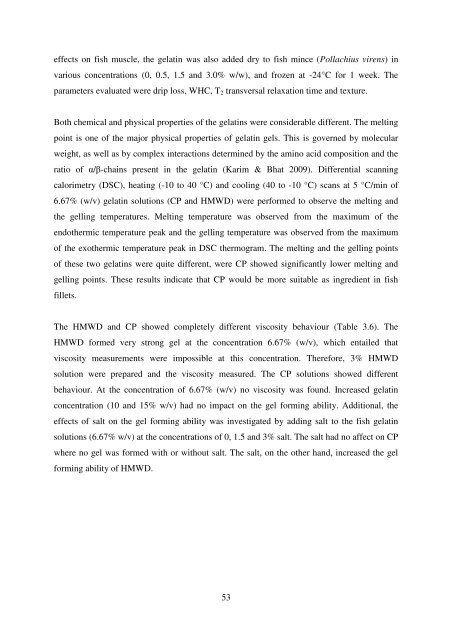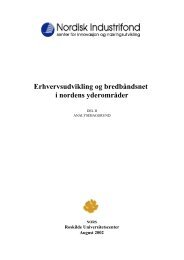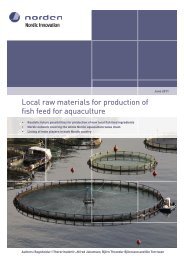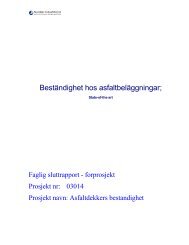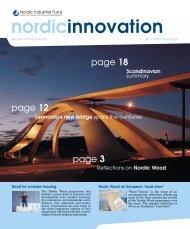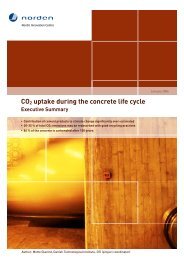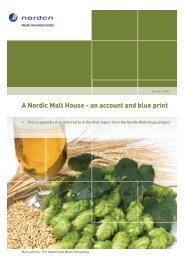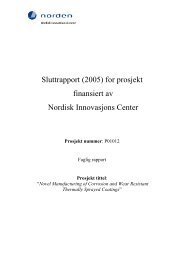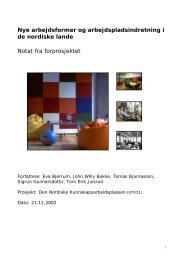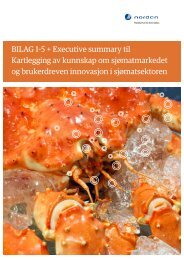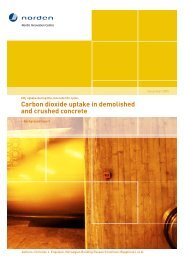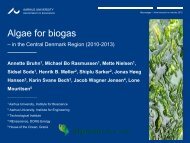Value added fish by-products - Nordic Innovation
Value added fish by-products - Nordic Innovation
Value added fish by-products - Nordic Innovation
Create successful ePaper yourself
Turn your PDF publications into a flip-book with our unique Google optimized e-Paper software.
effects on <strong>fish</strong> muscle, the gelatin was also <strong>added</strong> dry to <strong>fish</strong> mince (Pollachius virens) in<br />
various concentrations (0, 0.5, 1.5 and 3.0% w/w), and frozen at -24°C for 1 week. The<br />
parameters evaluated were drip loss, WHC, T2 transversal relaxation time and texture.<br />
Both chemical and physical properties of the gelatins were considerable different. The melting<br />
point is one of the major physical properties of gelatin gels. This is governed <strong>by</strong> molecular<br />
weight, as well as <strong>by</strong> complex interactions determined <strong>by</strong> the amino acid composition and the<br />
ratio of α/β-chains present in the gelatin (Karim & Bhat 2009). Differential scanning<br />
calorimetry (DSC), heating (-10 to 40 °C) and cooling (40 to -10 °C) scans at 5 °C/min of<br />
6.67% (w/v) gelatin solutions (CP and HMWD) were performed to observe the melting and<br />
the gelling temperatures. Melting temperature was observed from the maximum of the<br />
endothermic temperature peak and the gelling temperature was observed from the maximum<br />
of the exothermic temperature peak in DSC thermogram. The melting and the gelling points<br />
of these two gelatins were quite different, were CP showed significantly lower melting and<br />
gelling points. These results indicate that CP would be more suitable as ingredient in <strong>fish</strong><br />
fillets.<br />
The HMWD and CP showed completely different viscosity behaviour (Table 3.6). The<br />
HMWD formed very strong gel at the concentration 6.67% (w/v), which entailed that<br />
viscosity measurements were impossible at this concentration. Therefore, 3% HMWD<br />
solution were prepared and the viscosity measured. The CP solutions showed different<br />
behaviour. At the concentration of 6.67% (w/v) no viscosity was found. Increased gelatin<br />
concentration (10 and 15% w/v) had no impact on the gel forming ability. Additional, the<br />
effects of salt on the gel forming ability was investigated <strong>by</strong> adding salt to the <strong>fish</strong> gelatin<br />
solutions (6.67% w/v) at the concentrations of 0, 1.5 and 3% salt. The salt had no affect on CP<br />
where no gel was formed with or without salt. The salt, on the other hand, increased the gel<br />
forming ability of HMWD.<br />
53


